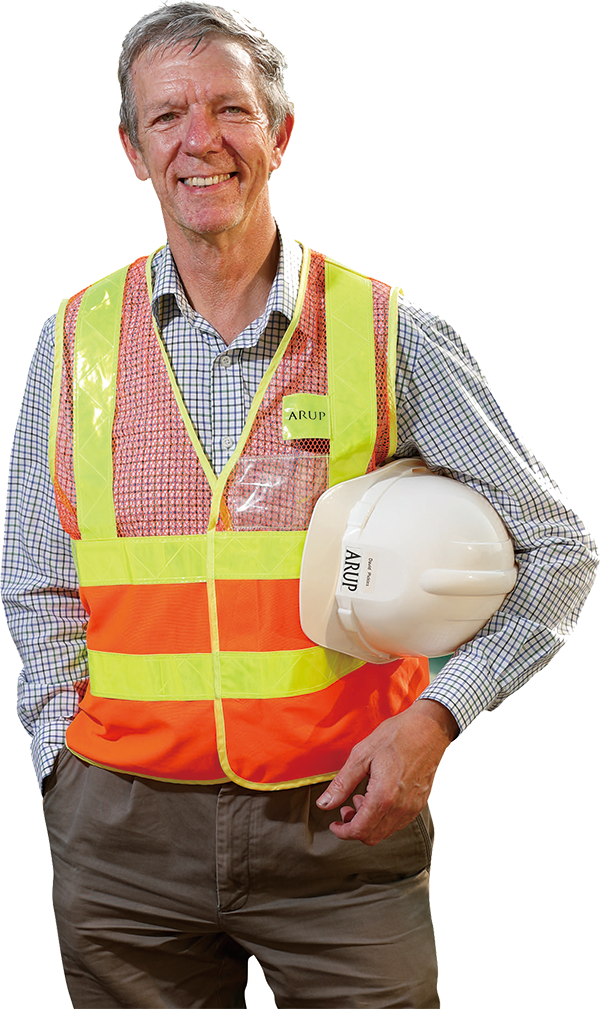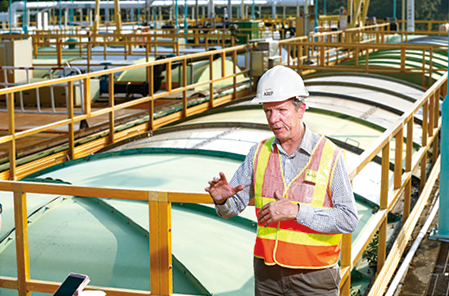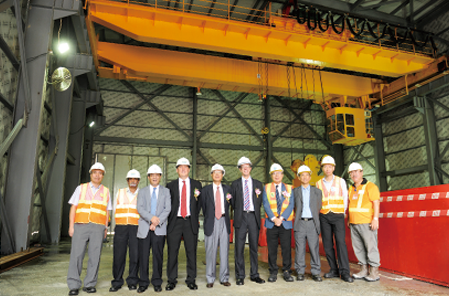
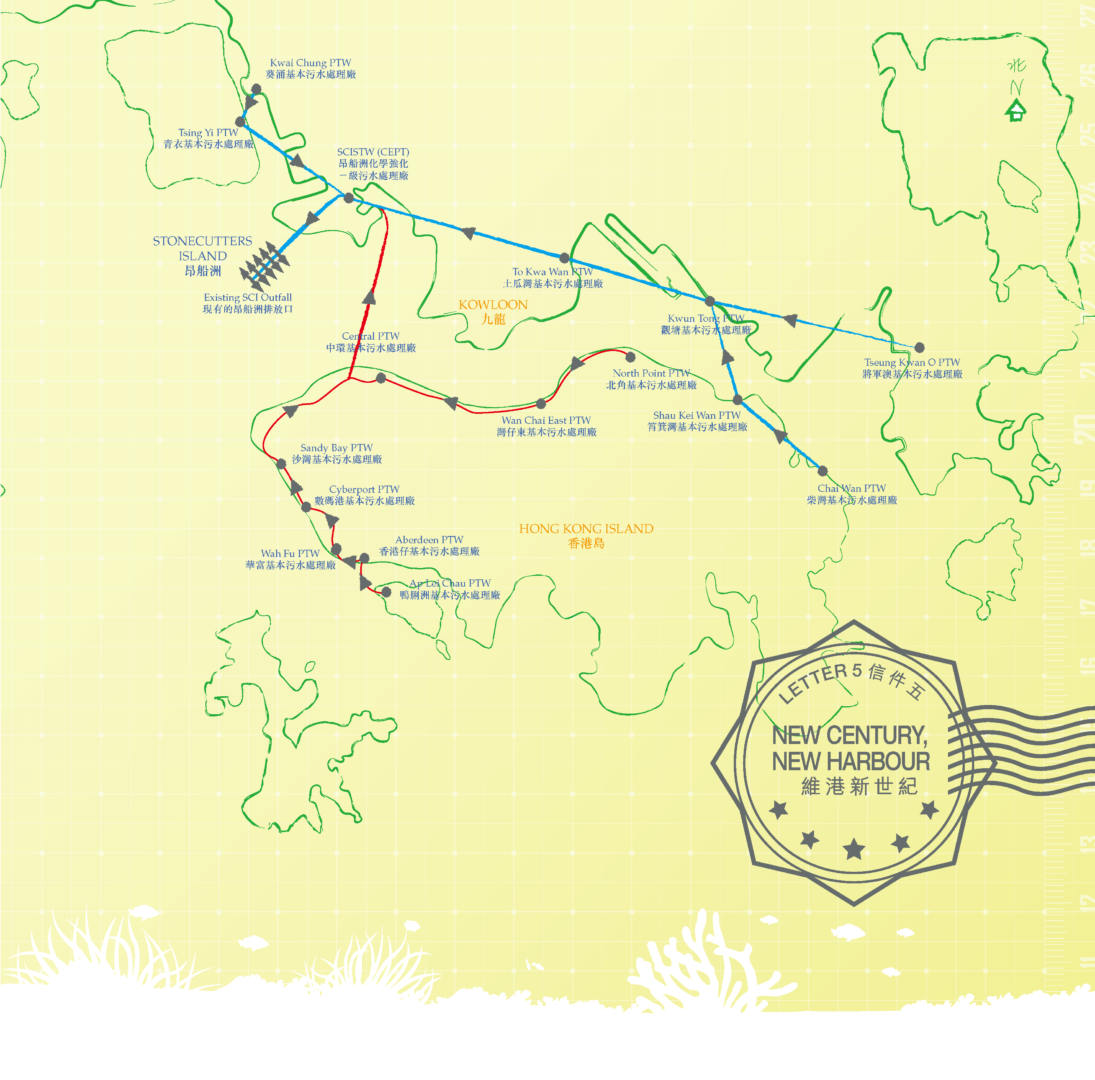
Dear Harbour,
When HATS Stage 1 was commissioned in December 2001, the city’s vision to clean up our precious Victoria Harbour was finally realised. The timing could not have been more auspicious: bringing a new lease of life to our marine waters for the new millennium.
Once operational, HATS Stage 1 began treating an initial flow of about 1.3 million cubic metres of sewage each day, removing some 600 tonnes of sludge that had previously been directly discharged from the most densely populated urban areas into our dear Harbour. The positive environmental impact on our Harbour water quality was dramatic.
All this was made possible thanks to the successful completion of the HATS Stage 1 major works.
Stage 1 Benefits: Obvious Water Quality Improvement
HATS Stage 1 commissioning brought obvious improvement to the water quality in Victoria Harbour. An average increase of about 10% in dissolved oxygen in our Harbour waters supported marine life to flourish. Corals were found thriving again in Harbour waters.
At the heart of it all is the SCISTW which removes from the sewage 70% of organic pollutants in terms of biochemical oxygen demand, 80% of suspended solids, and 50% of sewage pathogens in terms of E. coli.
Yet HATS Stage 1 also had its problems. After the full commissioning of Stage 1, although remarkable water quality improvements were seen at the middle and eastern areas of the harbour, the western harbour, notably in the area of the Tsuen Wan beaches, was still subject to the impacts of the large volume of treated but not yet disinfected effluent discharged from SCISTW. Coupled with the relatively short outfall off SCISTW, the seven Tsuen Wan beaches had to be closed due to the high E. coli level. Also, odour from the SCISTW became an issue for the neighbouring community in West Kowloon where new residential and commercial developments unforeseen during Stage 1 planning had mushroomed.
This pointed to the need for a longer outfall or the provision of disinfection facilities. The odour problem had to be resolved too.
After Stage 1, What’s Next?
There were quite a few twists and turns before the Government eventually decided to embark on what we now know as Stage 2A to enhance the HATS project.
In 1999, the Government decided to halt the implementation of further stages of HATS until consensus had been reached on the way forward. This acknowledged public concerns triggered by delays in the Stage 1 deep tunnel system construction, and differing views in the community on issues such as the level of sewage treatment and the discharge outfall location.
At the same time, the Stage 1 works were still not adequate to protect the Harbour. Sewage from the northern and south western sides of Hong Kong Island was still discharged virtually untreated into the Harbour.
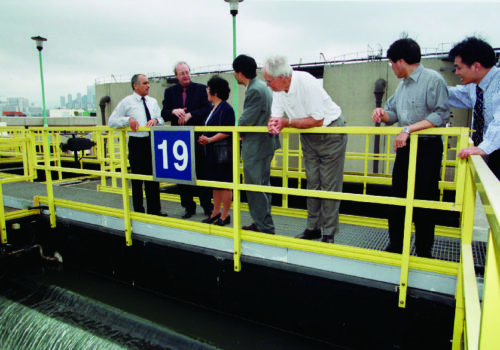
The Strategic Sewage Disposal Scheme International Review Panel visited the Stonecutters Island Sewage Treatment Works in May 2000.
It was against this backdrop that the Government commissioned an International Review Panel (IRP) in April 2000. The second IRP on HATS, it was asked to re-examine the entire HATS scheme. The IRP comprised six members including two professors from the Mainland and USA, both of whom served on the first IRP back in 1994, and four other expert professors from various disciplines.
International Review Panel Recommendations
In its final report, released in November 2000, the IRP proposed four treatment and discharge options, recommending Biological Aerated Filters (BAF) as the preferred treatment technology, with deep tunnels for sewage transfer and short outfall for disposal. The SCISTW was commended as the most efficient chemically enhanced primary treatment (CEPT) plant in the world, providing a common base for further development.
However, as Hong Kong uses seawater for toilet flushing, the effectiveness of BAF technology for our saline sewage was uncertain. Public acceptance of the high recurrent cost of tertiary treatment had yet to be ascertained, too. Another constraint was the unavailability of land at Stonecutters Island, North Point and Sandy Bay to house the proposed treatment facilities.
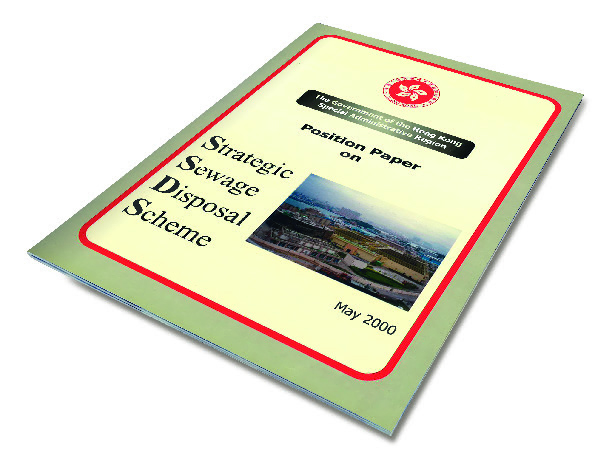
The Government issued a position paper on the Strategic Sewage Disposal Scheme
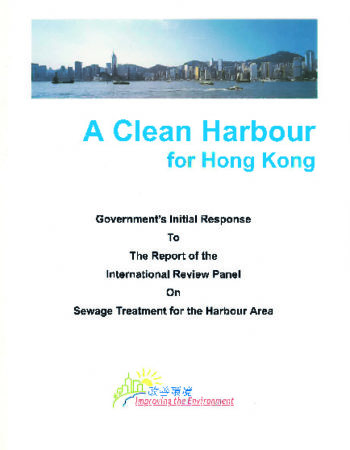
The Government responded to the Report of the International Review Panel in 2001
Going for Tertiary Treatment?
The Government commissioned two further studies, namely the “Environmental and Engineering Feasibility Studies” (EEFS) and “Compact Sewage Treatment Technologies Trials” (CSTTT). The former was to assess the water quality impacts and engineering feasibility of the IRP options while the latter was to test the effectiveness of compact treatment technology in treating Hong Kong’s saline sewage.
When the two studies were completed in June 2004, all four IRP options were found to be environmentally acceptable and technically feasible, but the tertiary treatment option would pose substantial operational and cost issues. The BAF technology was found not suitable for Hong Kong’s saline sewage, and the water quality modelling results did not warrant the adoption of tertiary treatment to protect our Harbour waters.
It followed then that among the options, upgrading the existing centralised treatment facilities at SCISTW was preferred in terms of cost, environmental and engineering considerations. The preferred option for HATS going into Stage 2 comprises Stages 2A and 2B.
Stage 2A will cover the provision of additional facilities, including the upgrading of existing PTWs in the harbour area catchments on the northern and south western sides of Hong Kong Island, the construction of about 21 kilometres of deep tunnels to convey sewage from the above PTWs to Stonecutters Island, and the upgrading of the existing SCISTW to provide CEPT, disinfection and deodourisation functions.
Stage 2B will cover the provision of biological treatment facilities to raise the level of treatment to meet higher effluent standards, located adjacent to the existing SCISTW.
The Preferred Stage 2 and Public Consultation
The Government then moved on to conduct a five-month public consultation in 2004 to ascertain the community’s views on the way forward for HATS.
The consultation process solicited feedback from a broad spectrum of the community, including political parties, Government’s advisory bodies, District Councils, professional bodies, academia, community groups, and various business and trade organisations. The majority supported the timely implementation of the Stage 2 option as outlined above, and in phases. There was also public support for the recurrent cost in future HATS phases to be recovered through sewage charges.
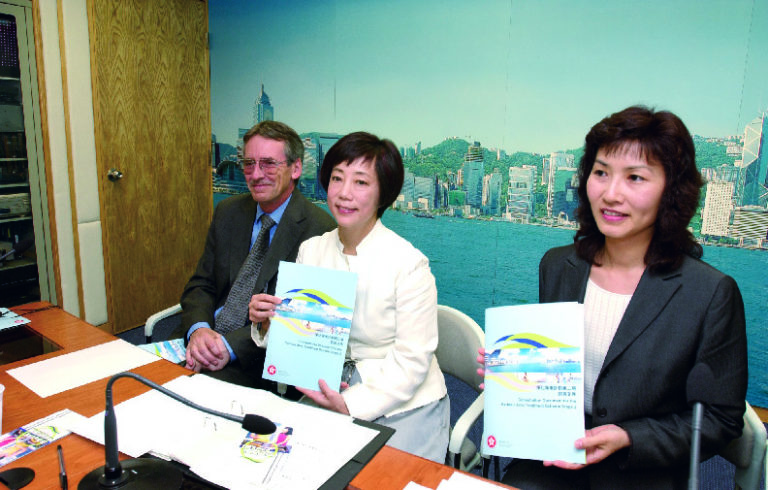
The then Secretary for the Environment, Transport and Works, Dr Sarah Liao (middle), announced that the Government would commence public consultations for the Harbour Area Treatment Scheme Stage 2 on 21 June 2004.
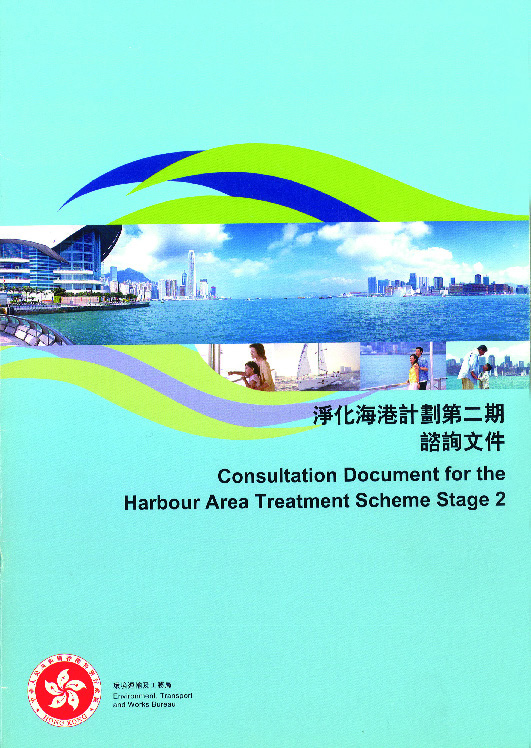
The Government conducted a public consultation in 2004 on the way forward of Harbour Area Treatment Scheme
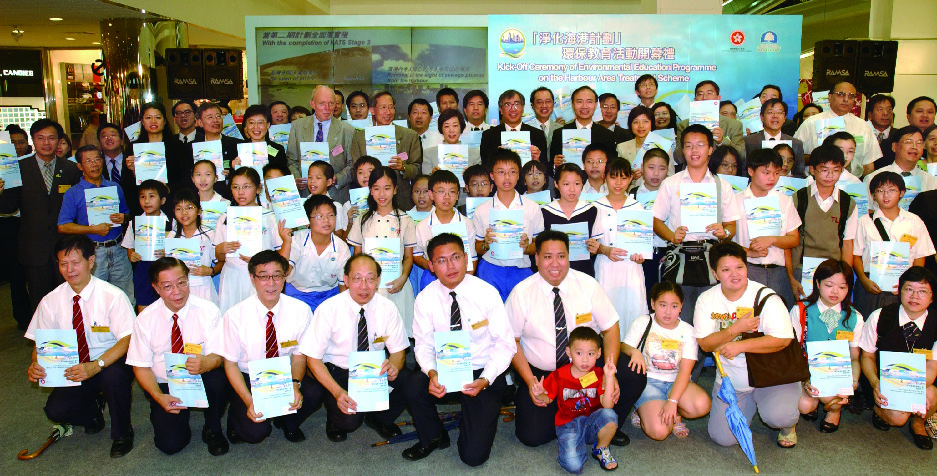
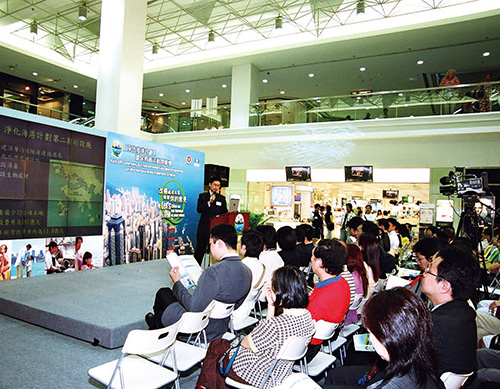
Kick-off ceremony of environmental education programmes on the HATS on 21 July 2004
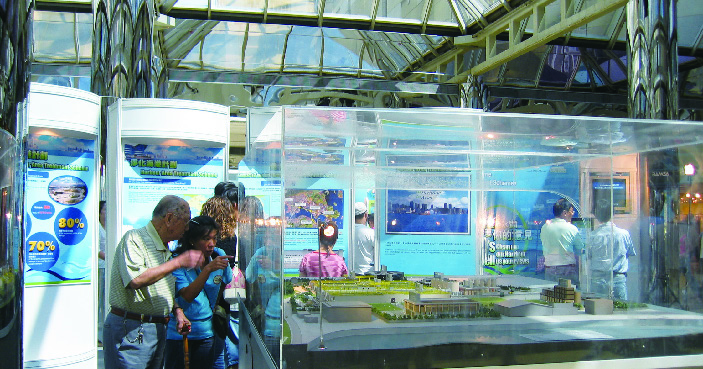
Roving exhibition of Harbour Area Treatment Scheme at Cityplaza in September 2004
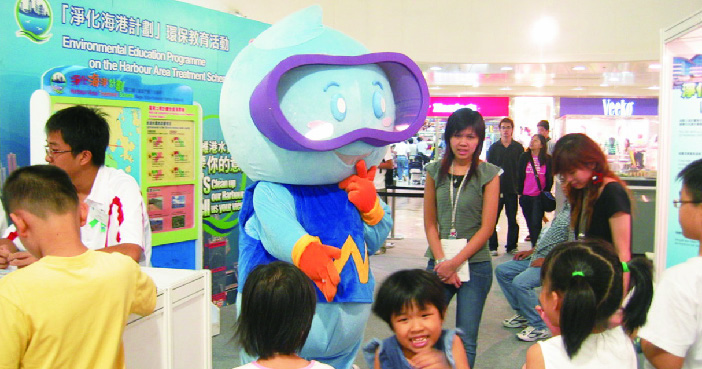
Roving exhibition of Harbour Area Treatment Scheme at Tsuen Wan Plaza in September 2004
HATS Stage 2 to Proceed in Phases
The Government decided to proceed with Stage 2, with Stage 2A scheduled for completion in 2014. It also decided that the implementation programme of Stage 2B would be reviewed, taking into account the population increase and water quality trends after the commissioning of Stage 2A.
Finally, a note about costs. Under the “polluter pays” principle, the Sewage Services Ordinance was already enacted back in 1994, enabling DSD to collect sewage charges to meet recurrent expenditure. A new arrangement was made whereby the annual sewage charge to the community would increase incrementally at 9.3% every year from 2008 onwards for 10 years to meet anticipated recurrent expenditure for Stages 1 and 2A combined. A capital cost of HK$17.5 billion for Stage 2A was also earmarked from the Capital Works Reserve Fund.
With funding secured, the Government decided to advance the disinfection facilities for completion in 2009 ahead of other Stage 2A works in order to bring early improvement to the water quality of the western part of our Harbour.
HATS had opened a new chapter.
POSTSCRIPT
“I first came to Hong Kong in the 1980s to work on the HATS project and to start our water business in East Asia. I came back again in 2007 when the Stonecutters Island Sewage Treatment Works was to be upgraded under Stage 2A. When Stage 2A was finally commissioned in 2015, it was a moment of great joy and a big relief to us all.”
“What makes the HATS project stand out is its huge scale and compactness compared to other sewage projects. For a similar scale project in the UK, the site required for the treatment plant would be ten times bigger!”
David PICKLES
Director, ARUP
